Mount Hamiguitan
A World Heritage Sanctuary
Every now and then a project comes up that I get really excited about. When I was asked to photograph the newest Philippine World Heritage Site, Mount Hamiguitan, I knew right away that this would be an amazing project to work on. Mount Hamiguitan is the only Heritage Site in Mindanao and was inscribed in 2014 after local initiatives strongly advocated and worked for the park to become listed under UNSECO. The park’s biologically diverse flora and fauna, high number of endemic species, and unique pygmy forest were a few of the key characteristics for which the site was listed.
I was given a unique opportunity to photograph the park for a coffee table book about the six UNESCO sites in the Philippines. The book produced by ArtPostAsia and the Aboitiz Foundation was recently published and will be available sometime in the coming months. Because of the coordination involved, size and remoteness of the park, I would not have been able to visit this beautiful and majestic place if it wasn’t for this project. Most of the park is still closed off to the general public and special permits are usually only granted to researchers. This could change in time, but they are being very cautious about opening up the core zones of the park to reduce human impact. However, there is a very modern museum and welcome center that people can visit to learn more about the park and I would highly recommend this. There are also some shorter trails you can hike on near the welcome center.
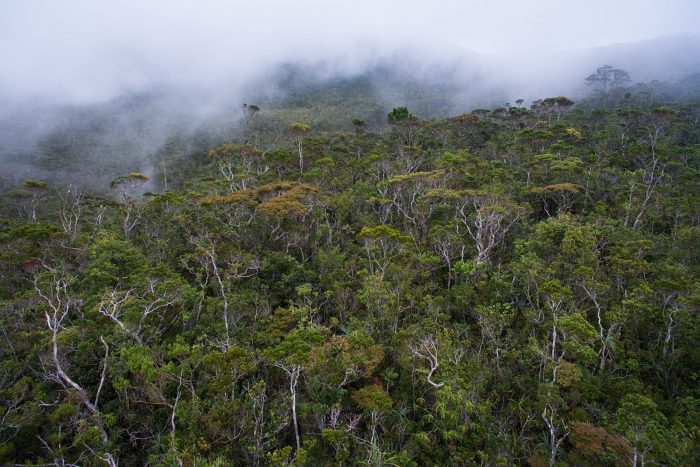
Mount Hamiguitan’s Pygmy or “Bonsai” forest is a unique ecosystem where the local vegetation has been stunted because of unfavorable soil conditions.

The Milky Way seen from Hamiguitan’s Pygmy forest. This unique forest ecosystem makes up roughly 1,234 hectares of the total 6,348 hectare Hamiguitan property.
Mount Hamiguitan is estimated to have 1,380 different species of plants and animals, 341 of which can only be found in the Philippines, and 12 of which are found only at Mount Hamiguitan.

(above) A Southeast Asian ant species, Technomyrmex sundaicus, on a purple colored Spathoglottis orchid within the dipterocarp forest of Mount Hamiguitan. Everywhere you looked there were thriving microhabitats and an abundance of life at all levels.
(below) Some of the flora species found within the park including the critically endangered Mindanao endemic orchid, Paphiopedilum adductum (left most) and Nepenthes mindanaoensis a pitcher plant species also endemic to Mindanao (right most).
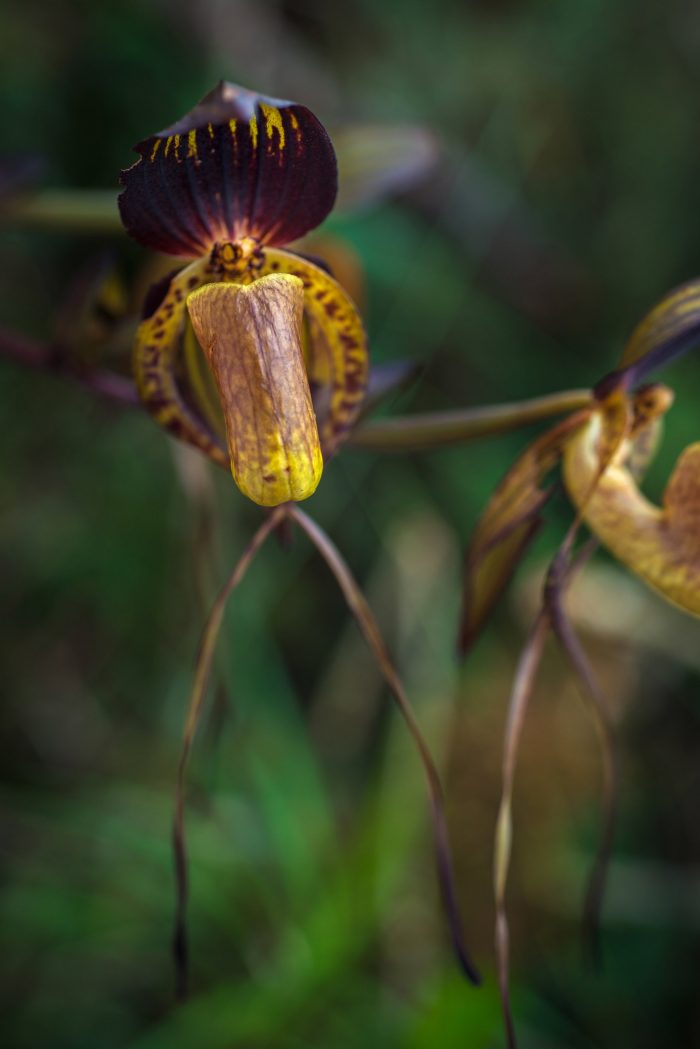
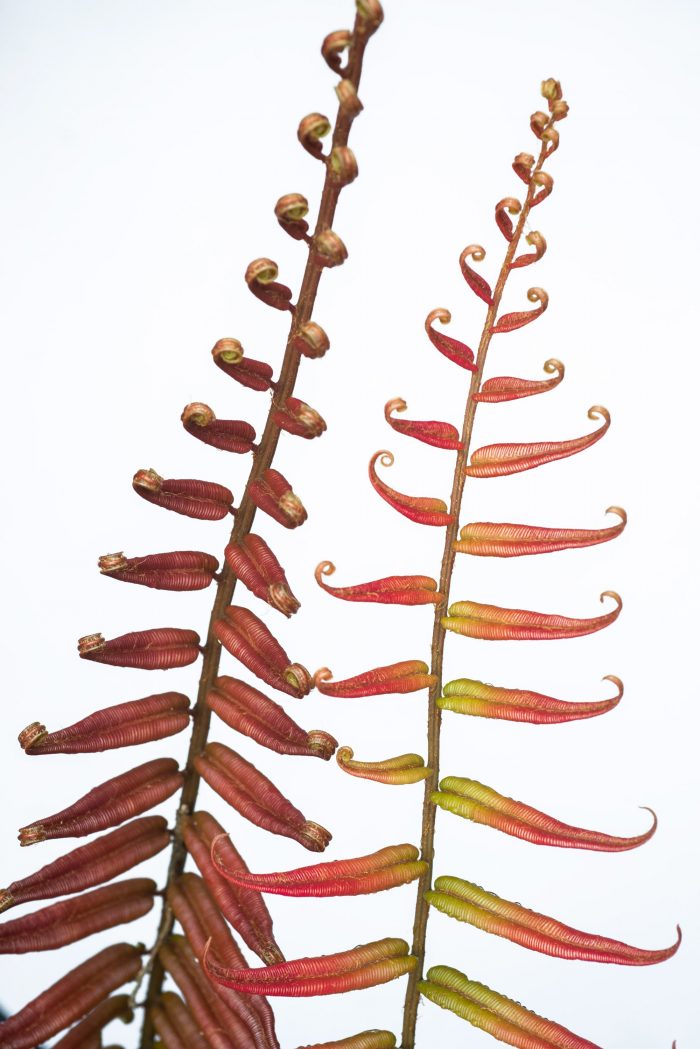
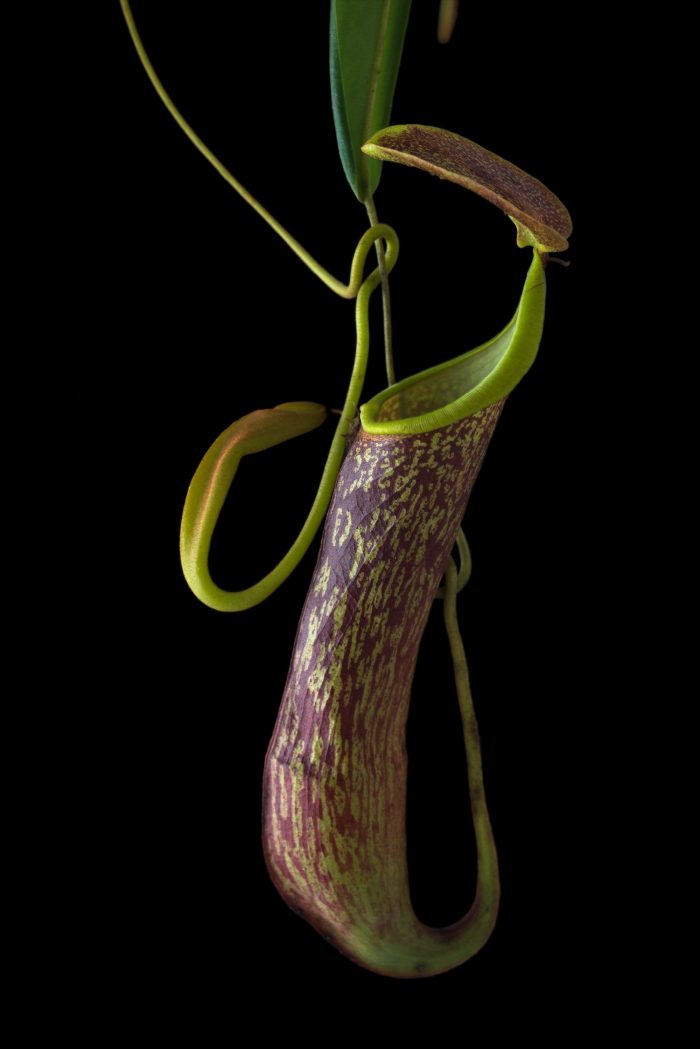
It took us a full day of hot, humid and upward hiking to reach our base camp just outside of the Pygmy forest. It was the start of the rainy season and we were constantly monitoring and expecting wet weather to come. Our team was made up of about 14 men. Transporting all of our gear, generator, fuel, food and other supplies was no easy task. We camped for 5 nights making day trips to different areas. Fortunately, we didn’t see any rain for the duration of our stay and the sky even opened up one night to let us witness the Milky Way. This trip would not have been possible without the support and help of the whole team involved. Dr. Roy Ponce was our team leader and deserves a great amount of credit for his work in getting Mt. Hamiguitan listed as a World Heritage site. I couldn’t have asked for a better or more entertaining group to be with for a week in the forest.
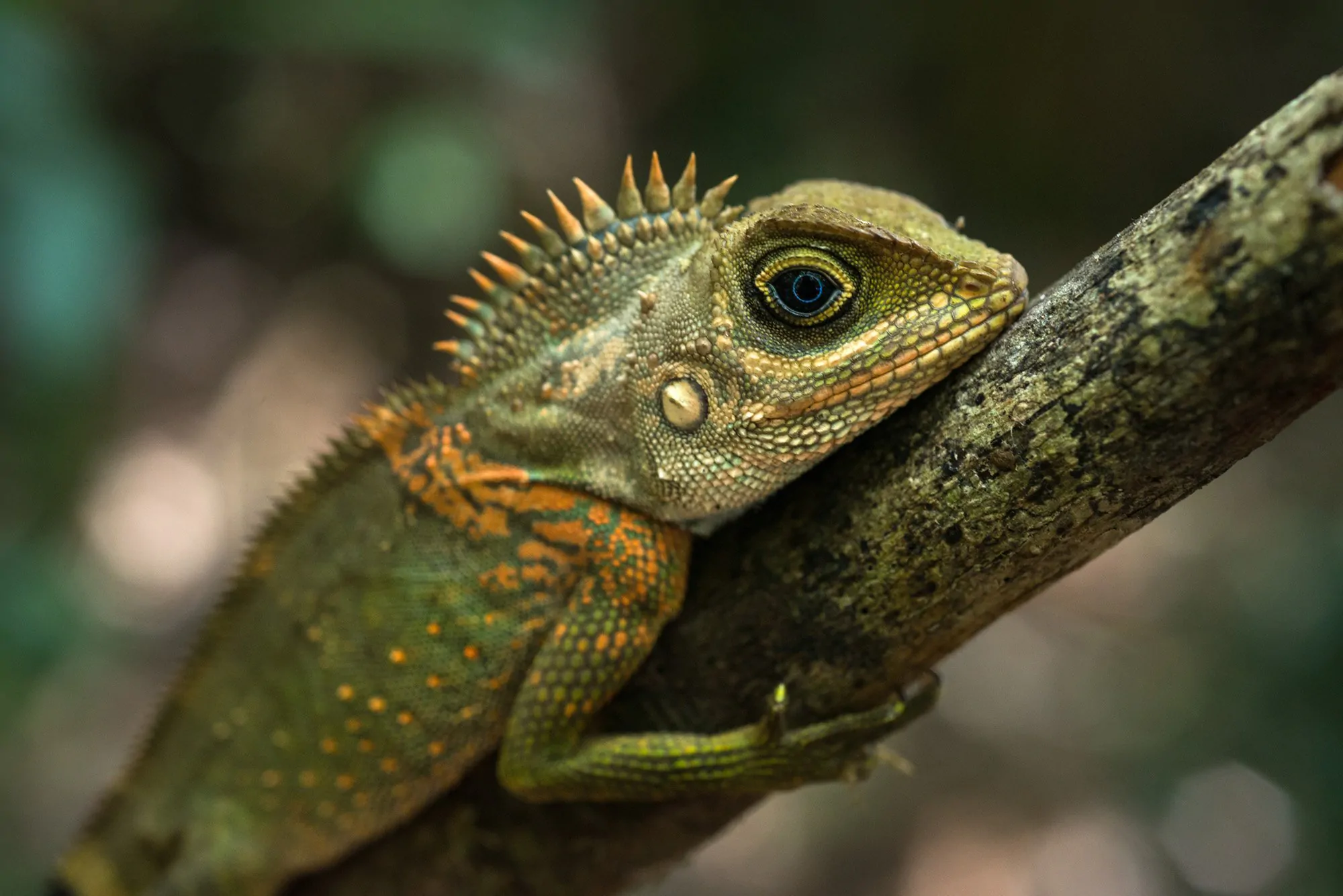
I have been to many different types of forests throughout the world and I would have to say that this trip was one of my most intimate and surreal experiences with nature. The forest is extremely unique and I felt alive being surrounded by it.
(above) A reptile species seen along the trail while hiking down from base camp.
(right) The Dumagooc River Valley, one of two major rivers in Mount Hamiguitan. I have been to many different types of forests throughout the world and I would have to say that this trip was one of my most intimate and surreal experiences with nature. The forest is extremely unique and I felt alive being surrounded by it.
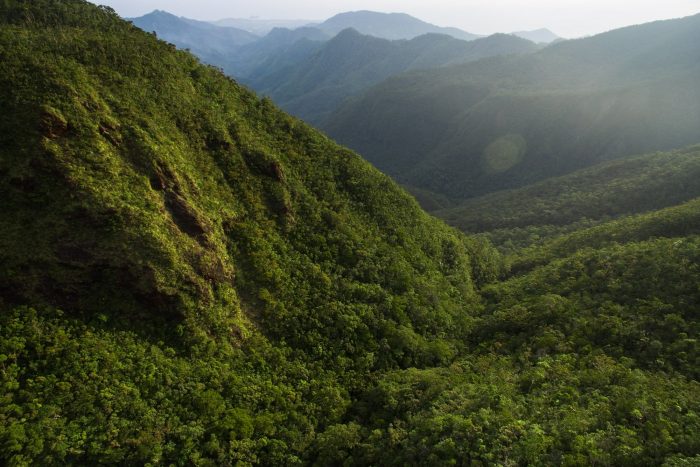
The Mount Hamiguitan Range Wildlife Sanctuary represents a complete, substantially intact and highly diverse mountain ecosystem, in a significant biogeographic region of the Philippines. Its diversity of plants and animals include globally threatened species as well as a large number of endemic species including those species that exist only in the Philippines, only in Mindanao and only in the nominated property. The fragile tropical “bonsai” forest that crowns the Mount Hamiguitan Range Wildlife Sanctuary epitomizes nature’s bid to survive in adverse conditions. As a result of its semi-isolation and its varied habitat types growing in dissimilar soil and climate conditions, its biodiversity has shown a significantly high level of endemicity that has led scientists to believe that there may be more globally unique species waiting to be discovered in the area.
The combination of terrestrial and aquatic ecosystems within the boundaries of the property and the large number of species inhabiting each makes the Mount Hamiguitan Range Wildlife Sanctuary home to a total of 1,380 species with 341 Philippine endemics that include critically endangered species such as the iconic Philippine Eagle (Pithecophaga jefferyi) and the Philippine Cockatoo (Cacatua haematuropygia), as well as the trees Shorea polysperma, Shorea astylosa, and the orchid Paphiopedilum adductum. Its high level of endemicity is well exemplified by the proportion of its amphibian (75% endemic) and reptile (84% endemic) species. (Source: UNESCO)

(above) Inside Mount Hamiguitan’s Mossy Forest.
(right) A beetle species resting on a fern near our base camp. About 70 percent of the Philippines’ nearly 21,000 recorded insect species are found only in the country.
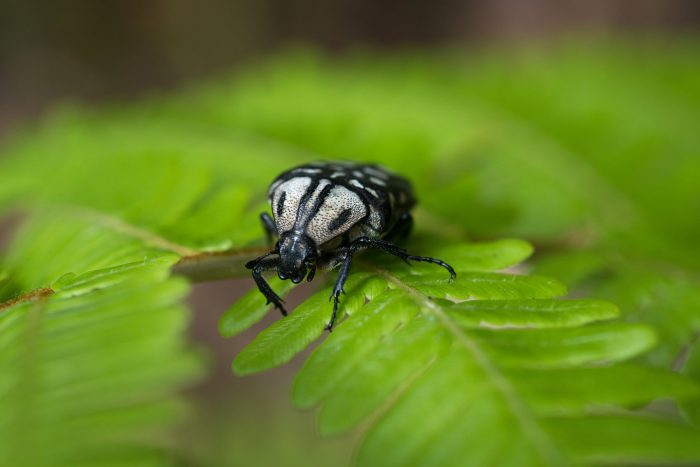
Mount Hamiguitan’s diversity of plants and animals include globally threatened species as well as a large number of endemic species that exist only in the Philippines, only in Mindanao and only in Hamiguitan.
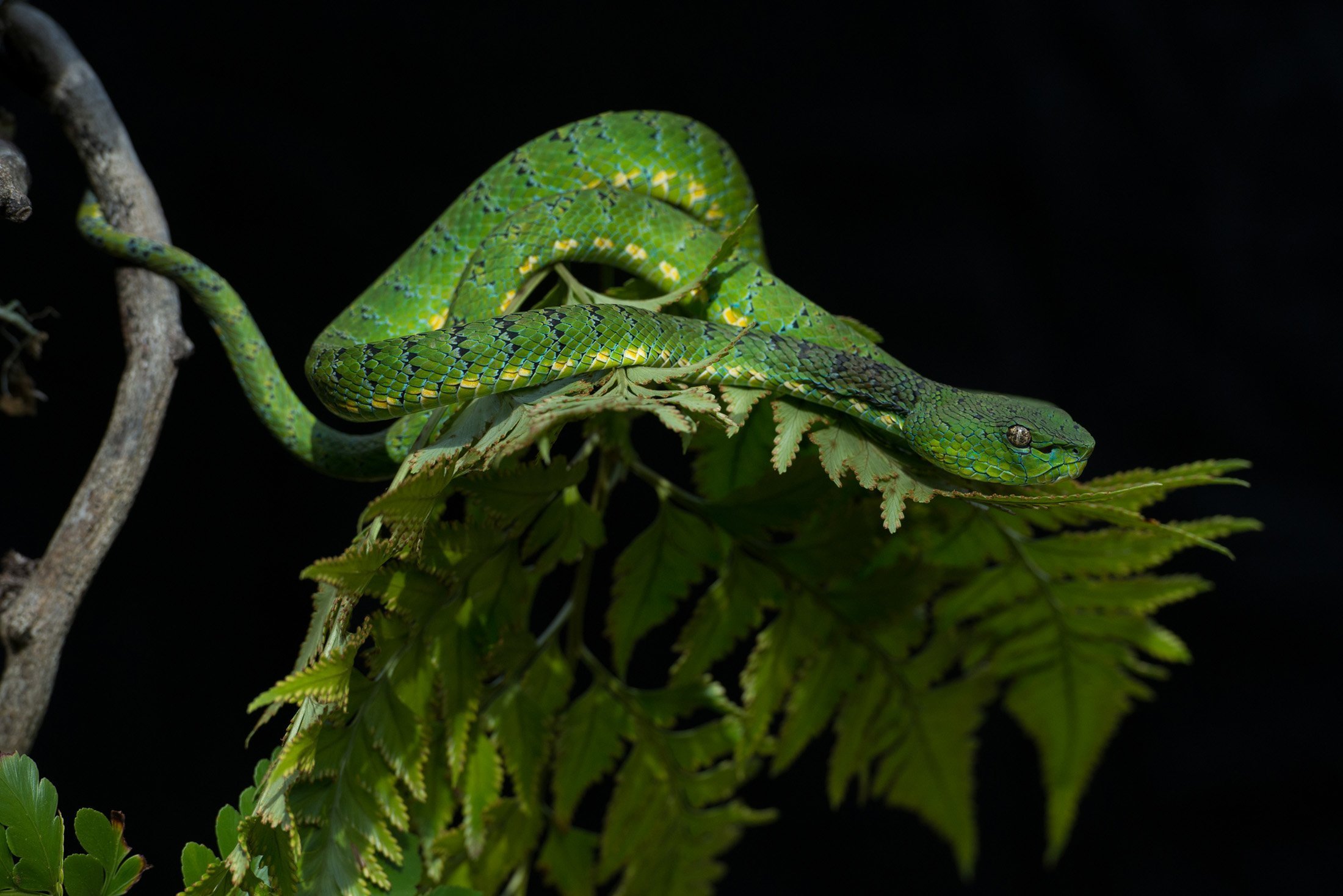
(above) A Philippine Pit Viper (Trimeresurus flavomaculatus) just outside of the pygmy forest. This species is endemic to Southeast Asia.
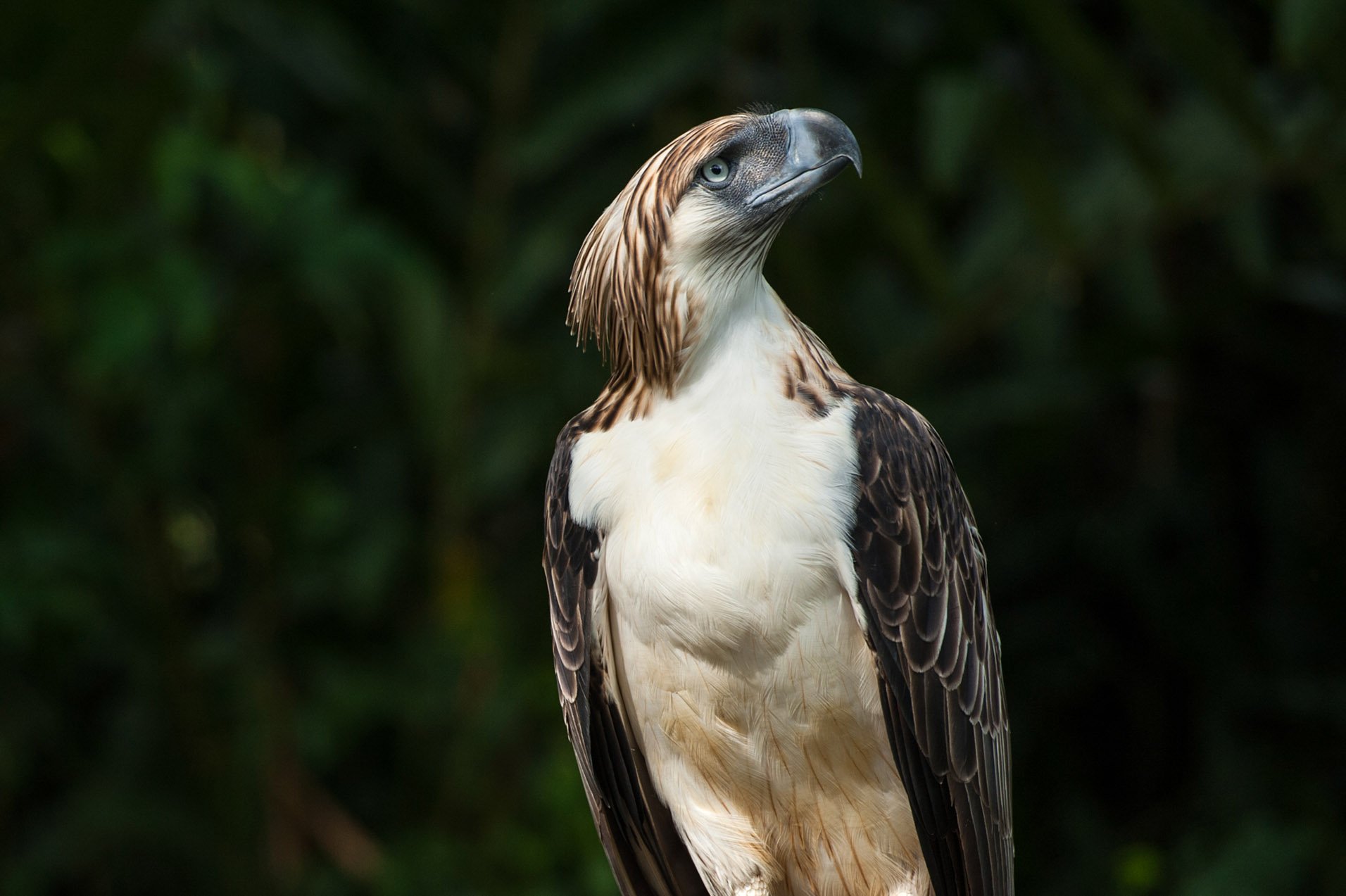
(above) Mount Hamiguitan is one of a few remaining tracks of forest where the critically endangered Philippine Eagle (Pithecophaga jefferyi) can be found.
We came across a group of researchers from the University of the Philippines (UP) Los Banos and the National Museum during our descend from base camp. They were spending a few weeks there collecting specimens, looking for new species, and doing a variety of other long-term research. In the group were specialists looking at everything from ants, birds, reptiles and flora. I was told that during their first day there they discovered a new species of ant while hiking along the trail. This is amazing to me and is a clear example of how diverse Mount Hamiguitan is. It’s highly likely that many more new species will be discovered in the park.
Although the park is protected there are still some challenges that are ongoing. Small-time offenders such as illegal gatherers and poachers sometimes enter the park to collect tree resin or rattan. We saw some signs of this at lower elevations. Prior to becoming a protected area there were some mining claims on the east coast of the park which could clearly be seen from near the summit. However, recently I heard the mining operations have stopped because the DENR under Sectary Gina Lopez revoked their permit. I can see how tourism in the area could also put more pressure on the parks resources, if not done correctly. The park is still closed to mountaineers and I know they are going to monitor very closely the effects visitors might have. Spending time in the park, learning about its history, and seeing first hand the diversity of life there energized me and once again reminded me how important local conservation initiatives are in protecting places like Mount Hamiguitan.
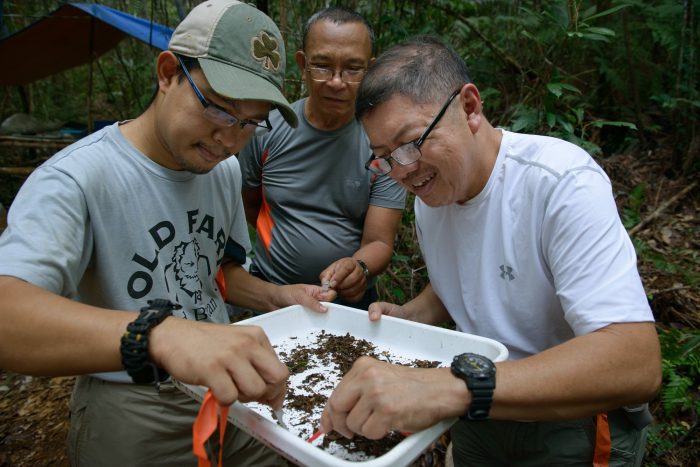
Myrmecologists David General and Perry Buenavente of the University of the Philippines – Los Banos (UPLB) and the National Museum of the Philippines, respectively, look for different ant species at their research camp in Hamiguitan.
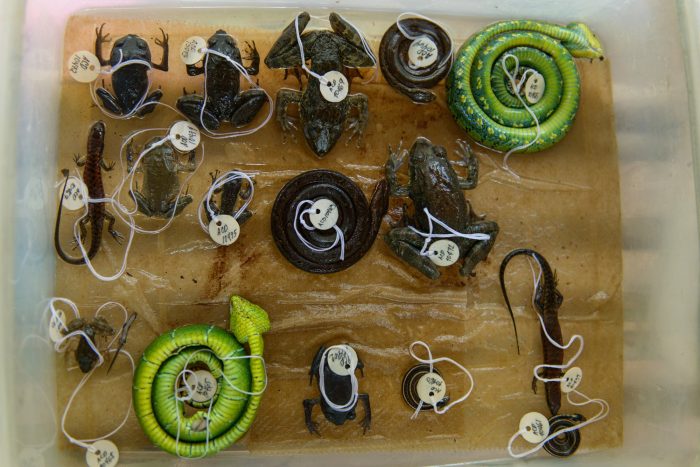
Some of the various reptile and amphibian specimens collected by researchers. These will be eventually be kept at the National Museum in Manila.
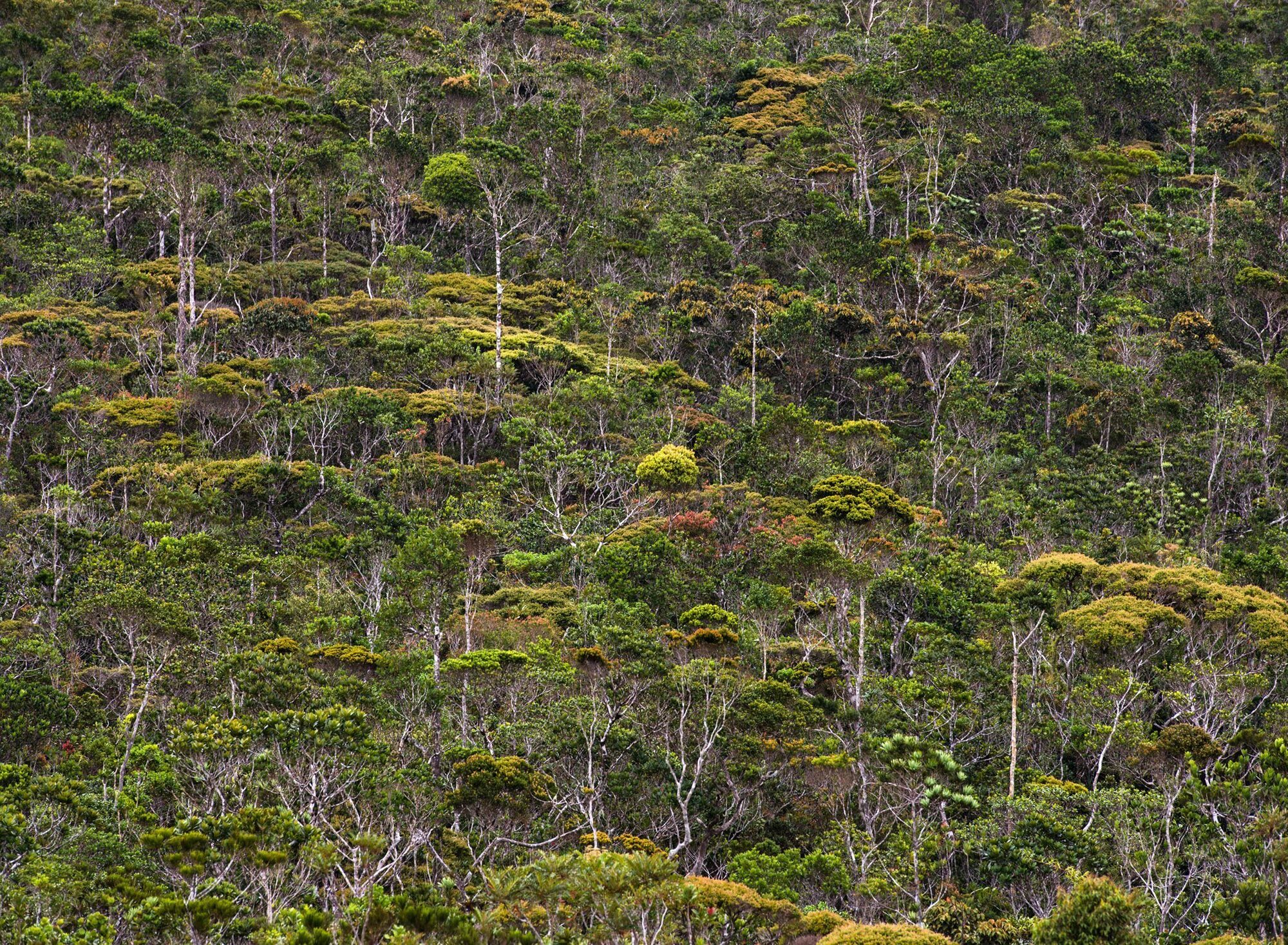
(above) Another view of Hamiguitan’s unique Pygmy Forest.
(right) A walking stick insect from the family Phylliidae, blends into its surroundings by using camouflage. Without our very knowledgeable local guide we would have passed by or overlooked many things, including this guy.

(right) A fern species found near a small water source in the pygmy forest.
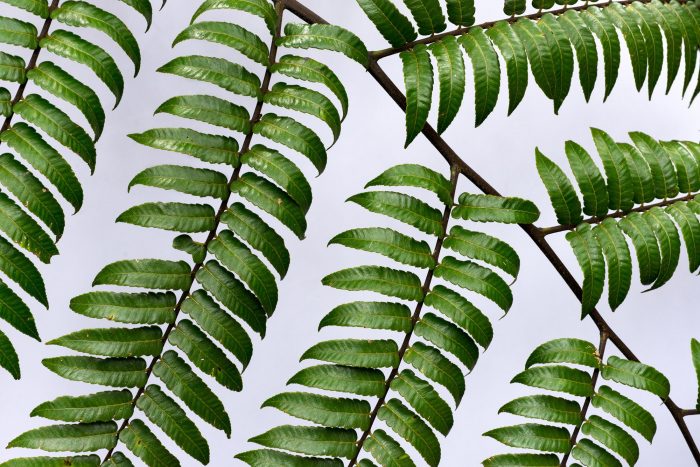
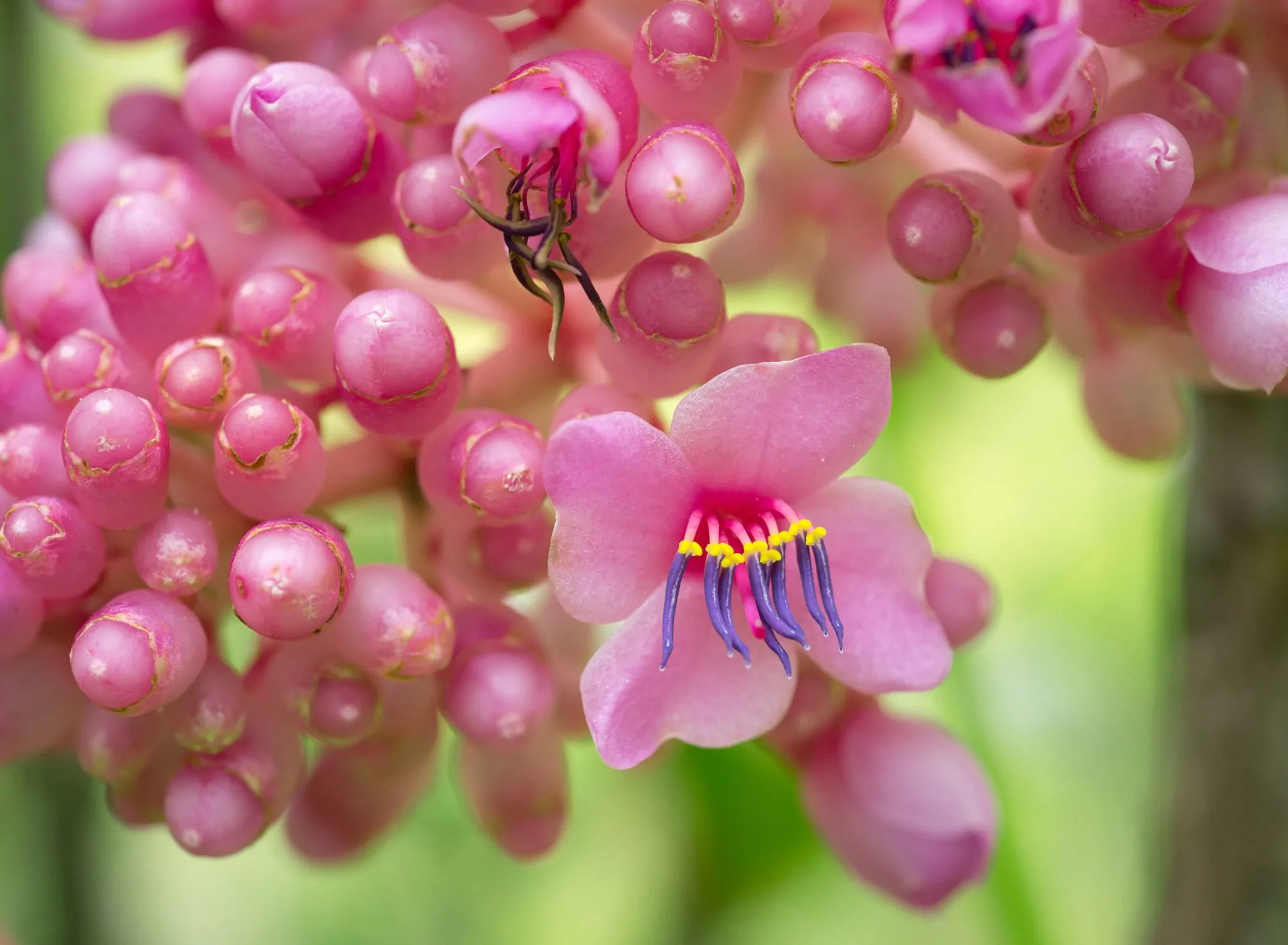

(above) Medinilla magnifica, is a species native to the Philippines and is commonly known as the Philippine orchid, though it is not an orchid.
(left) One of a number of different frog species we came across during our stay. Amphibians are known to be indicator species within ecosystems because of their sensitivity to changes in the environment. Seeing a diverse number of amphibians indicates that an ecosystem is relatively healthy.
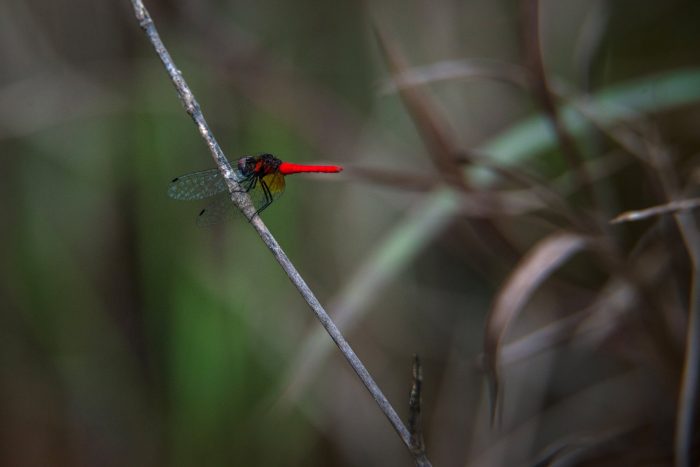
(left) Nannophya pygmaea, the world’s smallest dragonfly can be found in Mount Hamiguitan. It has a wingspan of only 20 mm. This photo was taken at Tinagong Dagat, a fresh water lake found within the park.
Spending time in the park, learning about its history, and seeing first hand the diversity of life there energized me and once again reminded me how important local conservation initiatives are in protecting places like Mount Hamiguitan.
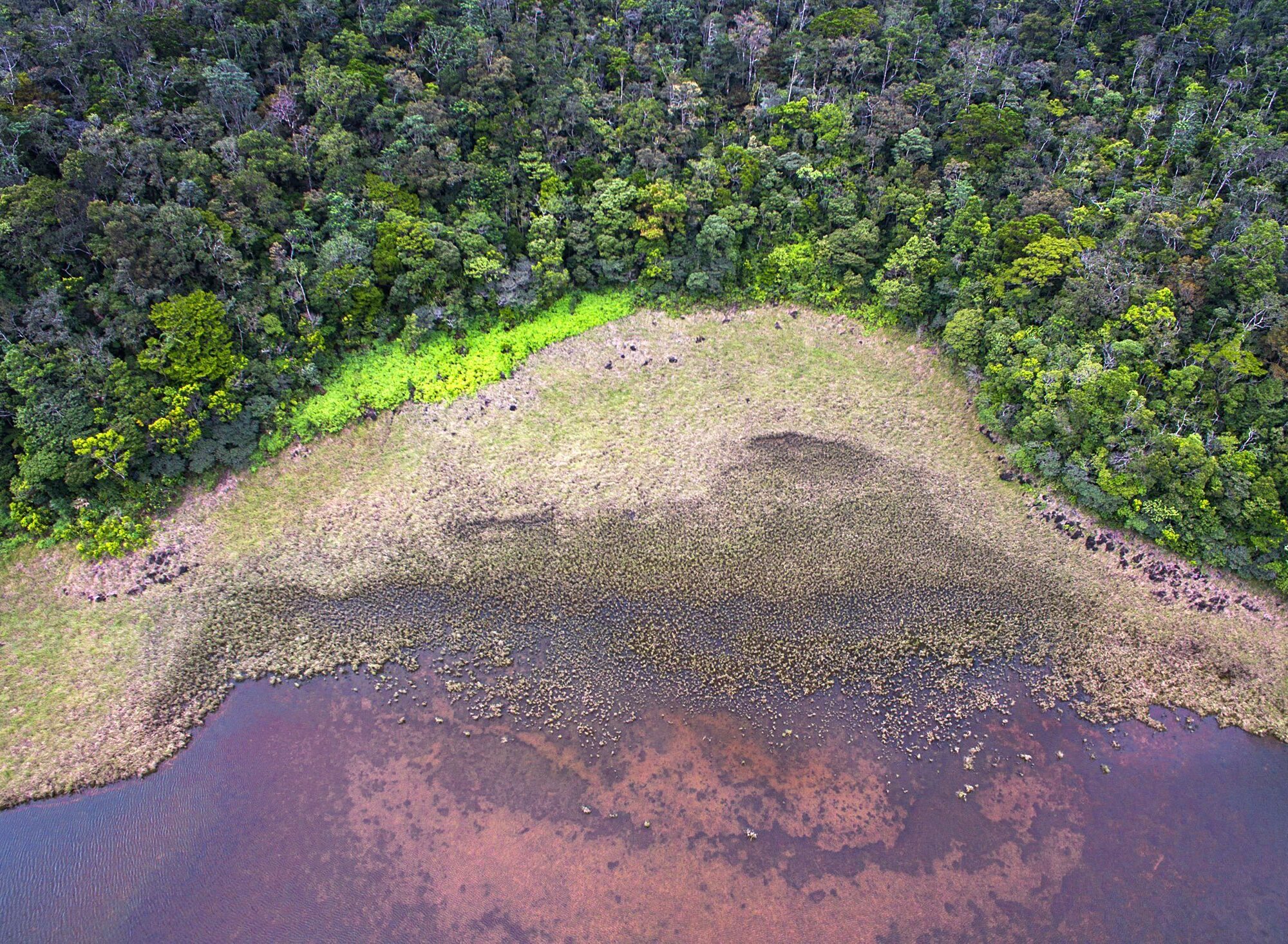
(above) A 5 hectare wide freshwater lake, locally called Tinagong Dagat, holds water during the rainy season but dries up during the dry months. I was told this is one of the places you have a better chance to see the Philippine Eagle. It took us three hours to hike here from base camp.
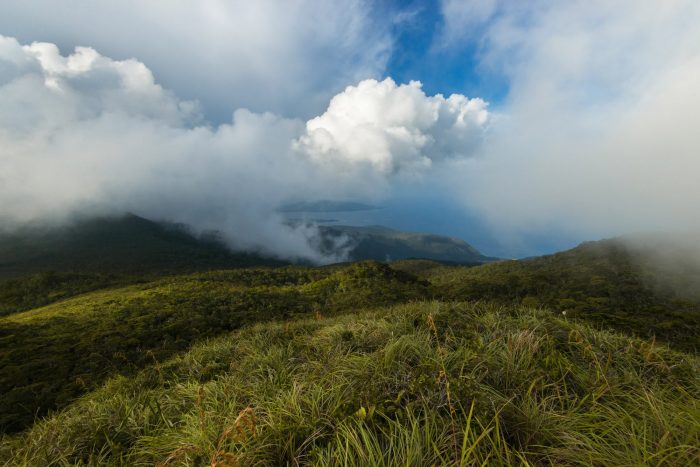
Lantawan Magnum
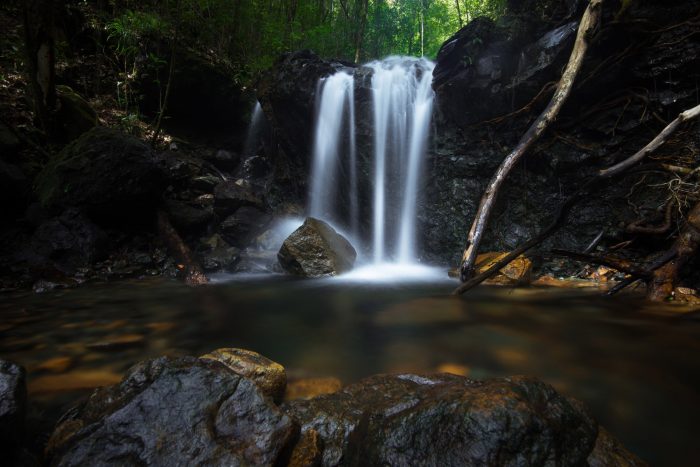
Dumagooc Falls
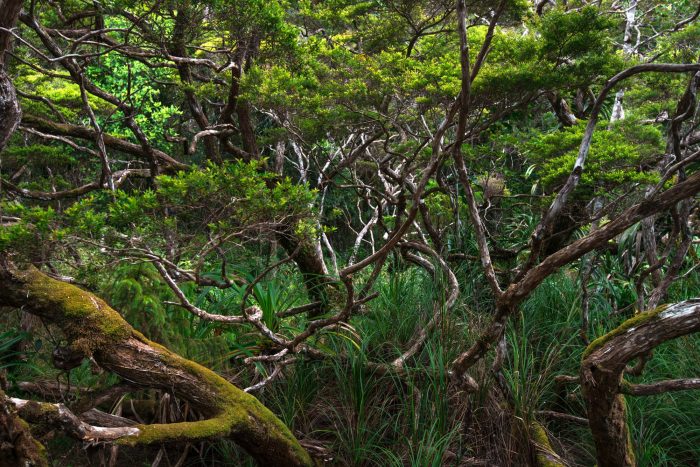
Hidden Garden
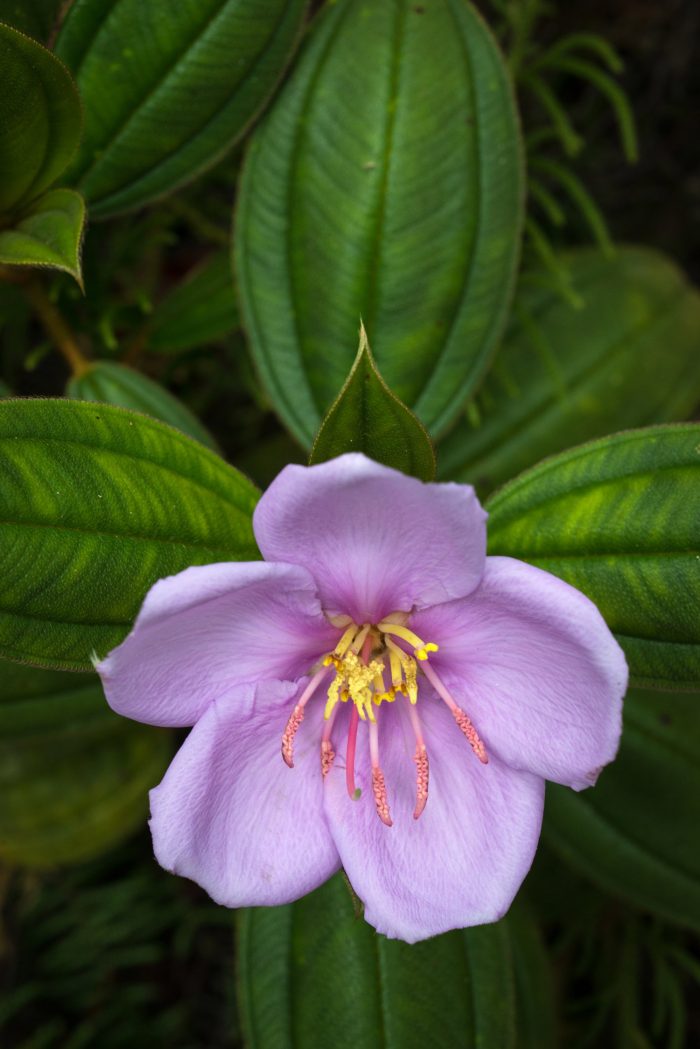
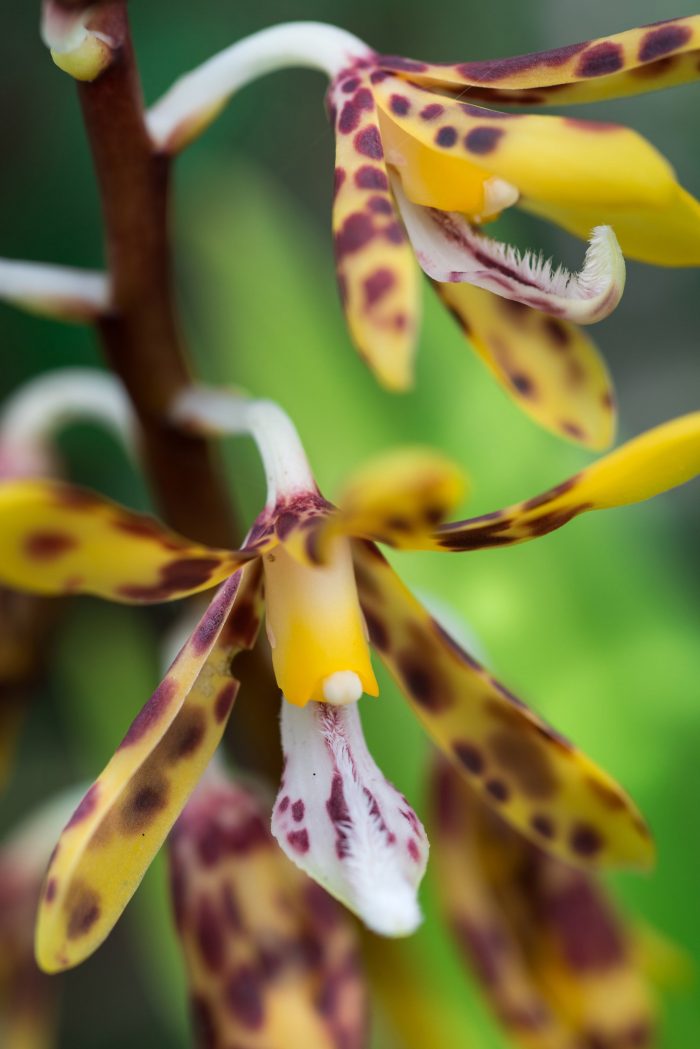

(above) Hamiguitan houses a total of 957 species of flora belonging to 427 genera and 166 families, 723 of which are angiosperms, 27 gymnosperms, 151 ferns, 13 fern allies, 17 mosses, 13 liverworts,and 13 lichens.
(right) A short aerial video showing the pristine Pygmy forest of Hamiguitan with clouds setting in. Although the rain stayed away during our visit, sunshine was limited because of the cloud cover that came in every afternoon.
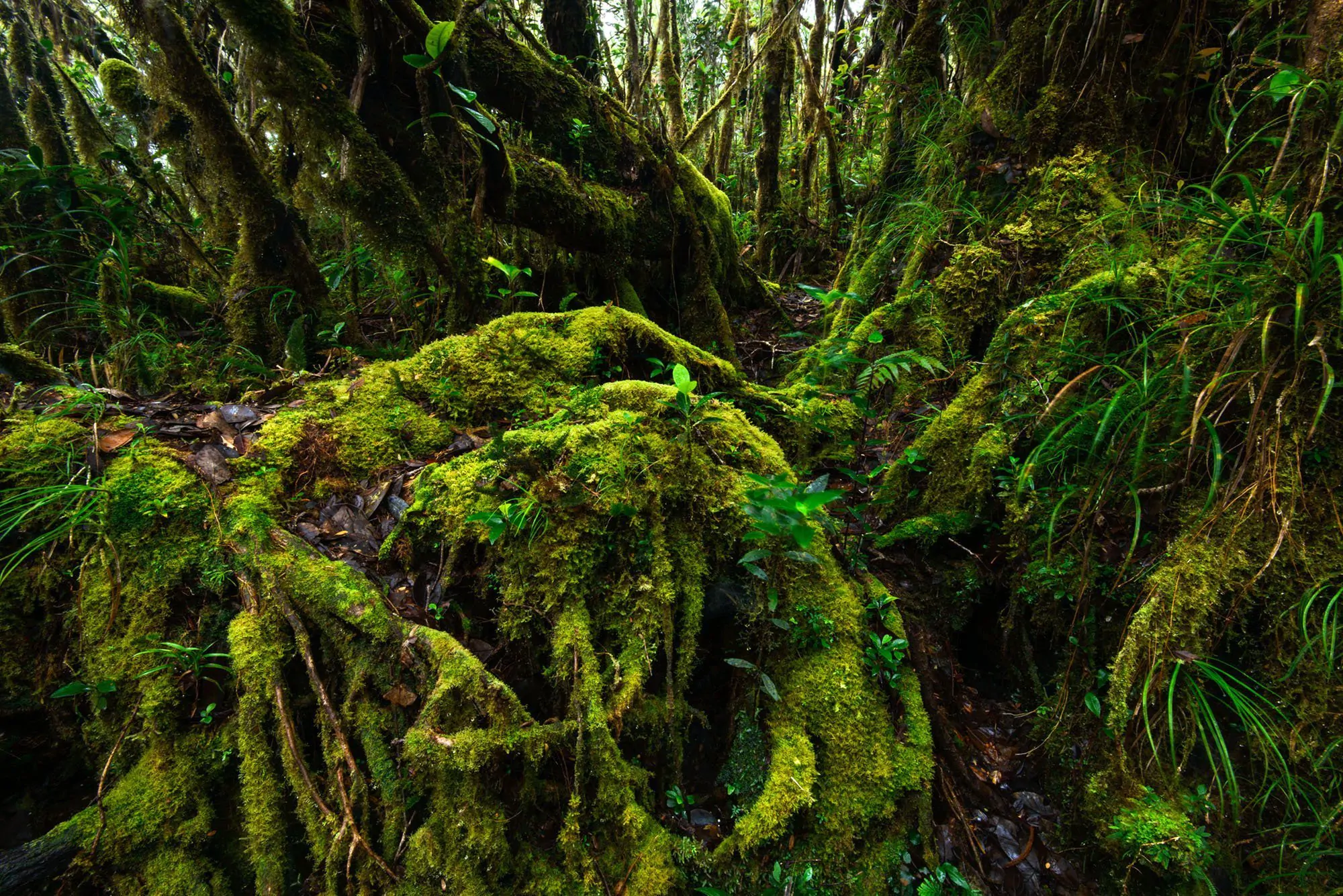
(above) Another view inside a mossy forest with the main hiking trail seen leading to the summit of the park.
(right) A blue colored mushroom found within Hamiguitan’s mossy forest.

(right) Macro view of moss growing on the forest floor.

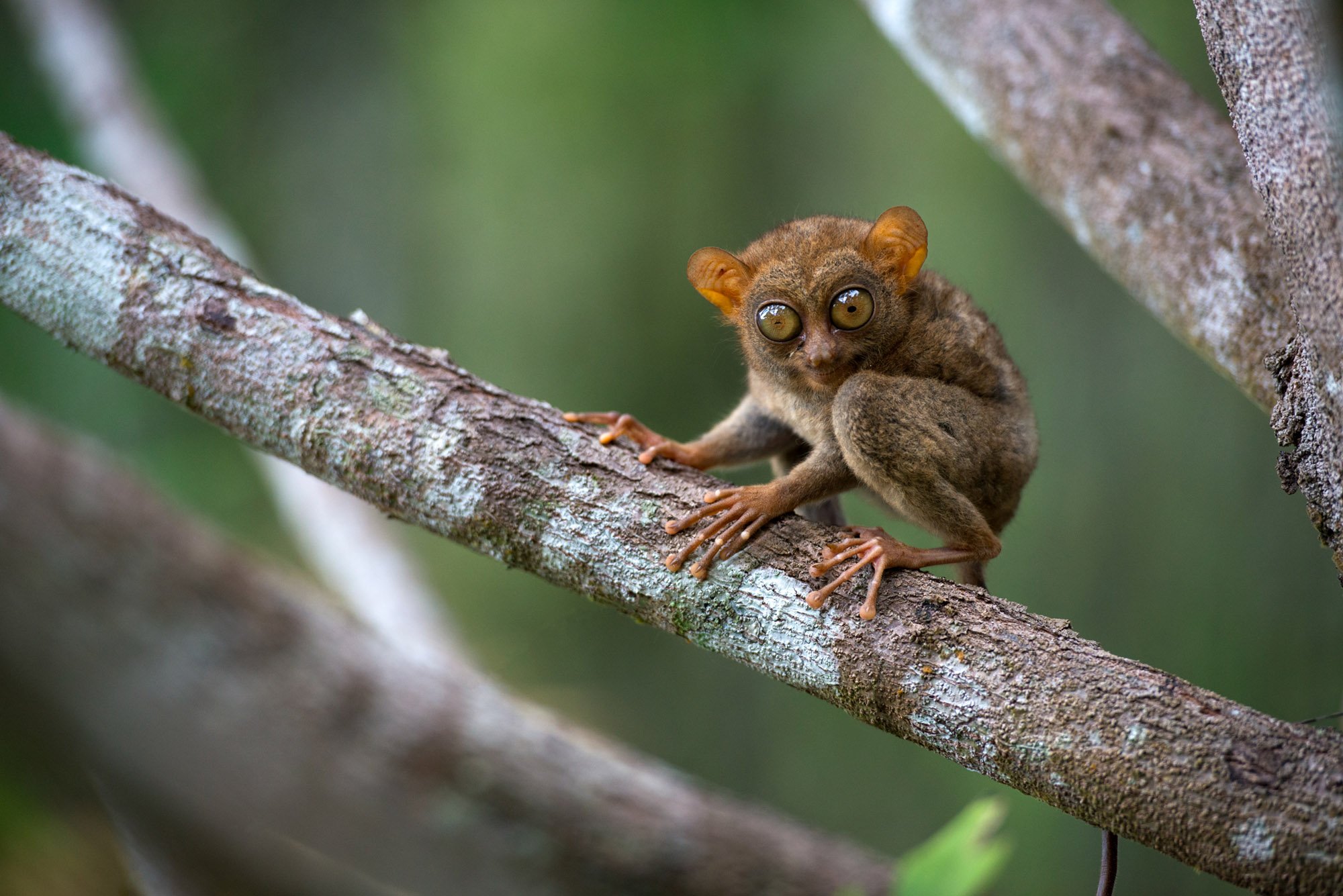
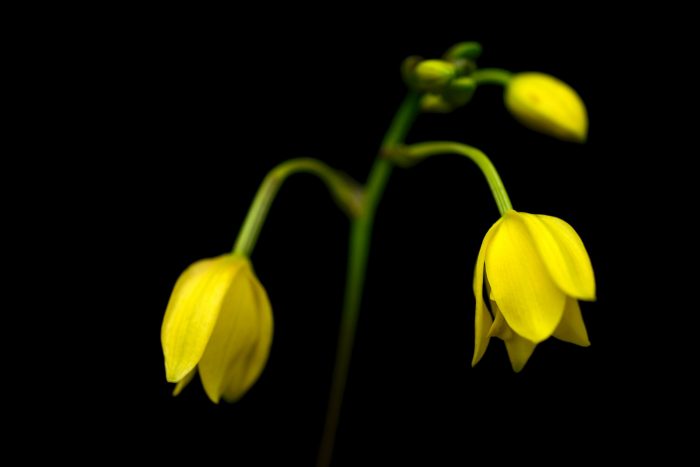
(above) The Philippine Tarsier (Tarsius syrichta) also makes its home within Mt. Hamiguitan. Upon researching, I found there is only one species of Tarsier in the Philippines but with three separate subspecies found in Mindanao, Leyte and Bohol. However, it is also noted that these subspecies classifications required more research.
(right) A yellow Spathoglottis orchid found within the park.
(right) Another colorful flora species found within the park. It was difficult not to take photos of every flower we came across because of the mesmerizing vibrant colors.
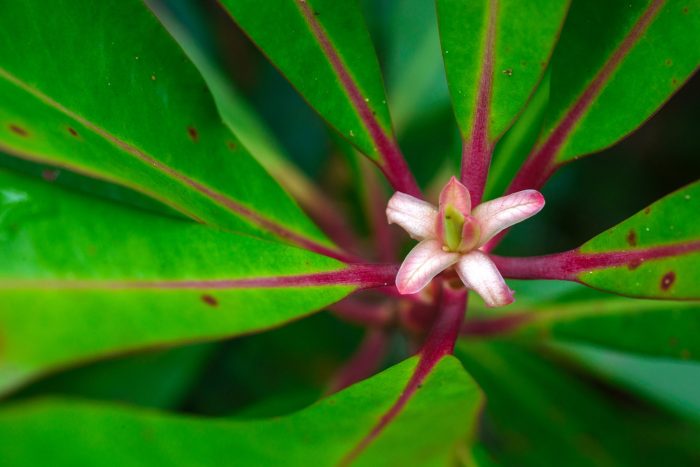
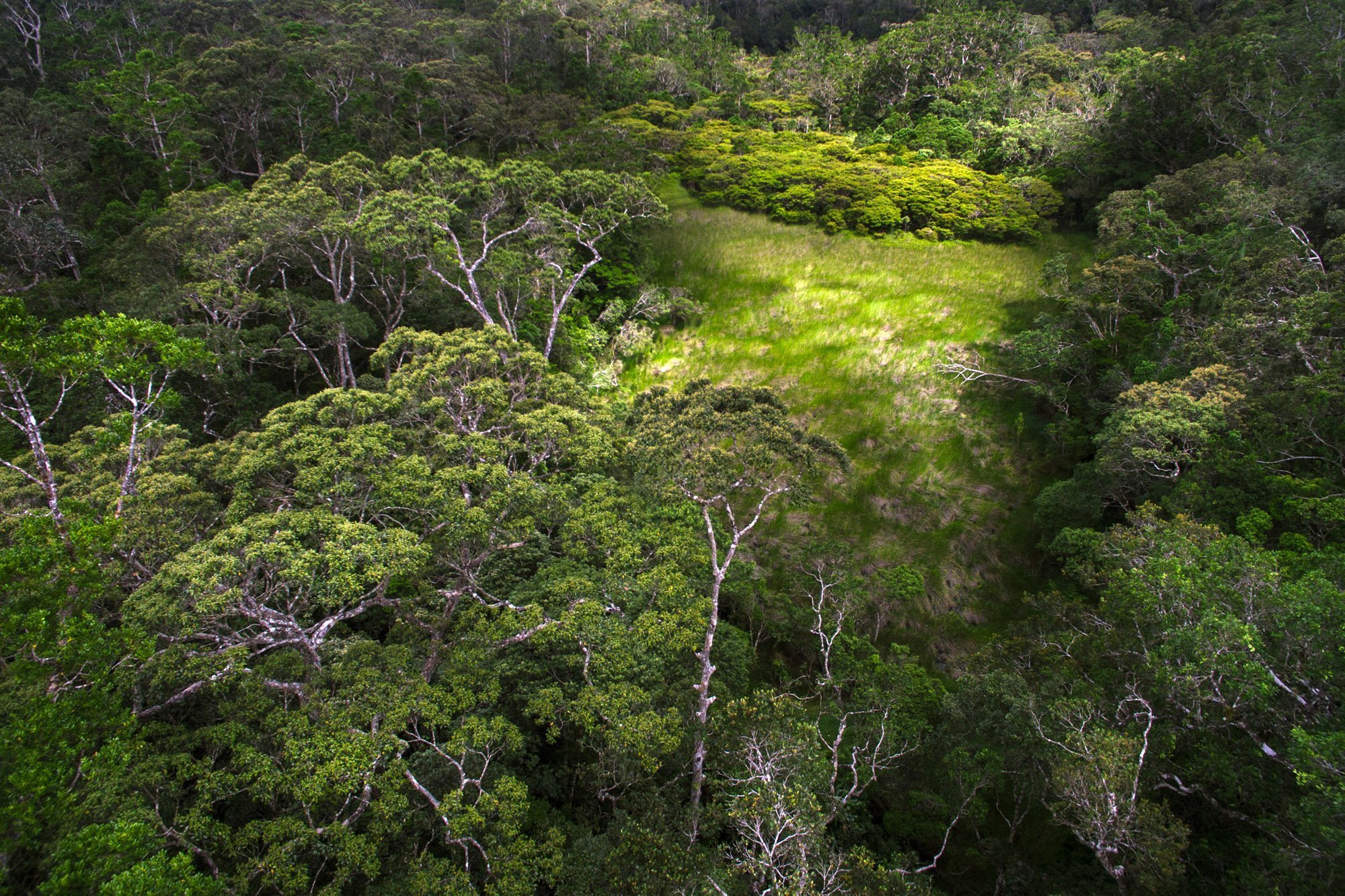
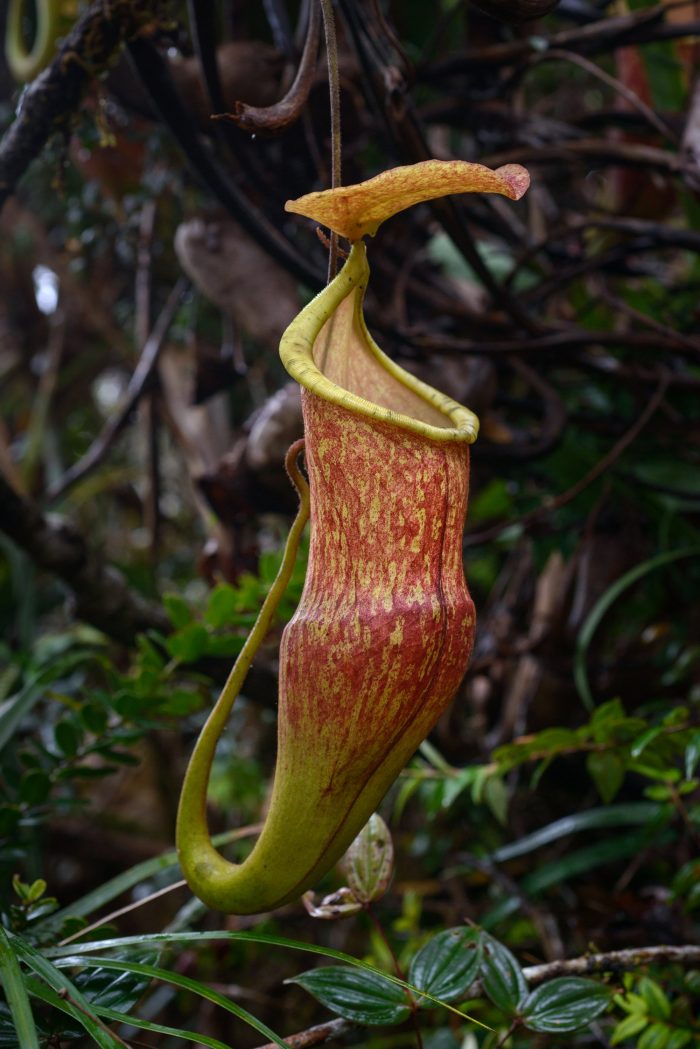

(above) An aerial view of what is called Mt. Hamiguitan’s Hidden Garden.
(left) Two site endemic flora species, meaning these two species can only be found in Mount Hamiguitan and no where else in the world. Mount Hamiguitan pitcher plant (Nepenthes hamiguitanensis) and the Pantropical fern (Lindsaea hamiguitanensis).
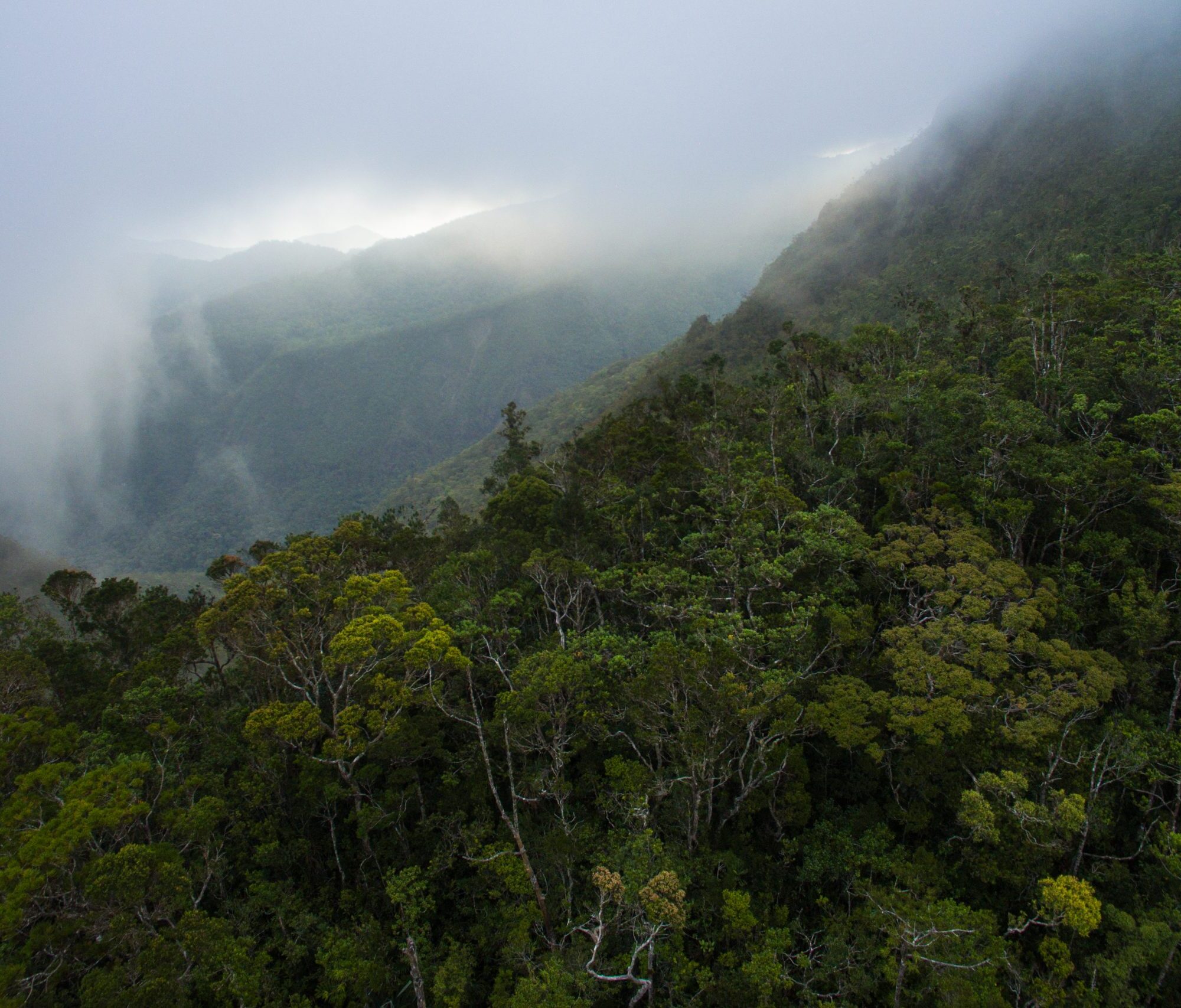
(above) An aerial view of Hamiguitan’s unique Pygmy Forest with afternoon clouds making their way in.
(right) A preview of the coffee table book, World Heritage Sites and Living Cultures of the Philippines, produced by ArtPostAsia and the Aboitiz Foundation. This is a chapter book with all of the six Philippine World Heritage sites included. Because Mt. Hamiguitan is the newest site it got the cover as well. The regular edition of this publication should be available soon and I must say the print quality and design came out fantastic.
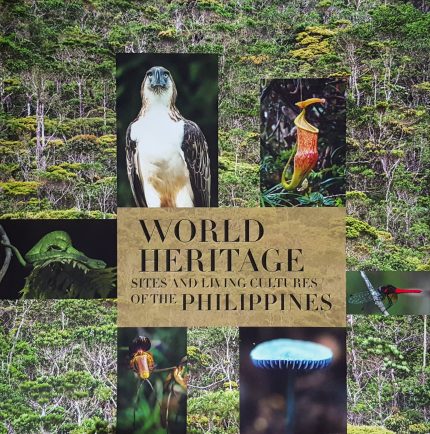
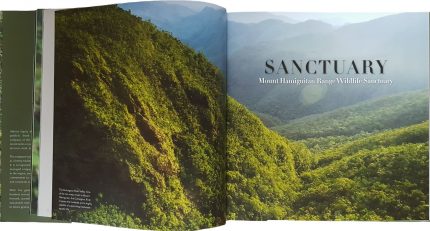
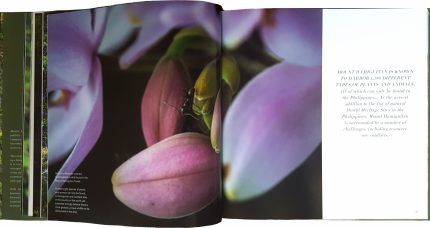
email: [email protected] |
© 2025 Jacob Maentz